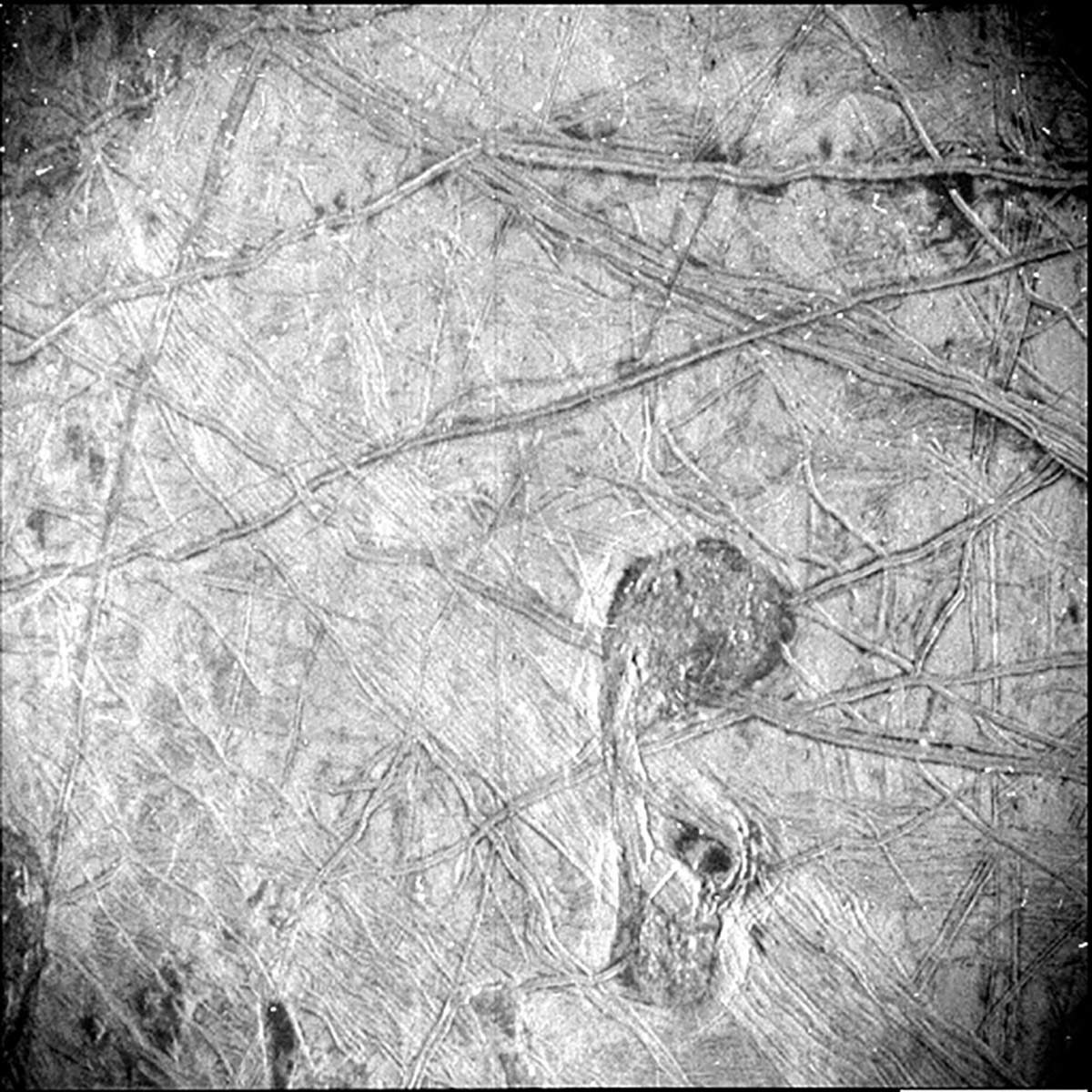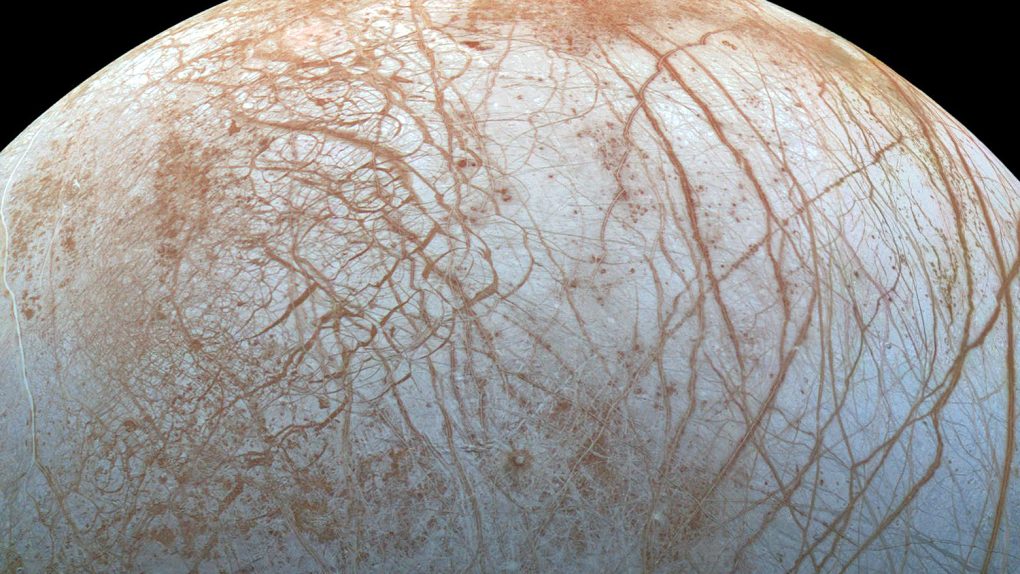NASA has captured the highest-resolution photo of Europa, one of Jupiter’s moons. The image, which NASA released last week, showcases over 93 by 125 miles of surface region on the moon. The space agency outlined exactly what we are able to see in the image in a post on the Jet Propulsion Laboratory’s website.
According to NASA’s post, the image reveals a crisscrossed network of grooves and double ridges along the surface of the moon. Because this photo of Europa is so high resolution, too, we are actually able to get a good look at those long parallel lines, which can be used to observe the elevated features found within the ice that makes up Europa’s surface.
In the new photo of Europa, we’re also given a great look at some dark stains. NASA says these stains may be tied to something happening beneath the surface of the planet. However, the space agency is unsure of exactly what they are. But perhaps future missions to Europa could help us learn more about them.
Other notable intricacies spotted in the photo of Europa captured by Juno in a flyby this past month include what appears to be a musical note below the center of the image. NASA also says that signatures of penetrating high-energy particles can be seen in the photo, too, in the form of white dots.

This new photo of Europa isn’t as breathtaking as those seen from the James Webb space telescope, but that doesn’t change their scientific significance at all. Being able to look this closely at Europa could help researchers learn more about the icy moon.
“This image is unlocking an incredible level of detail in a region not previously imaged at such resolution and under such revealing illumination conditions,” Heidi Becker, the lead co-investigator for the SRU, wrote in NASA’s post about the photo of Europa.
“The team’s use of a star-tracker camera for science is a great example of Juno’s groundbreaking capabilities. These features are so intriguing. Understanding how they formed – and how they connect to Europa’s history – informs us about internal and external processes shaping the icy crust.”
Looking for more space news: Check out how Europa made a star vanish earlier this year.








